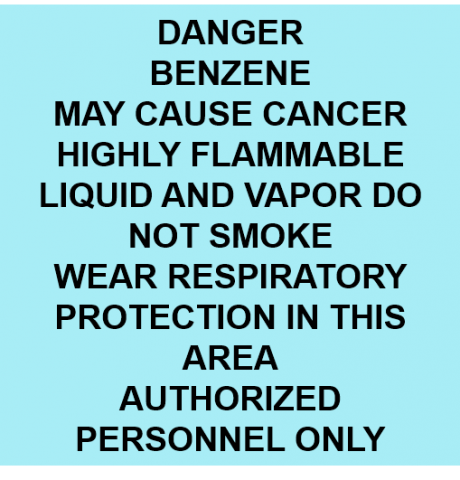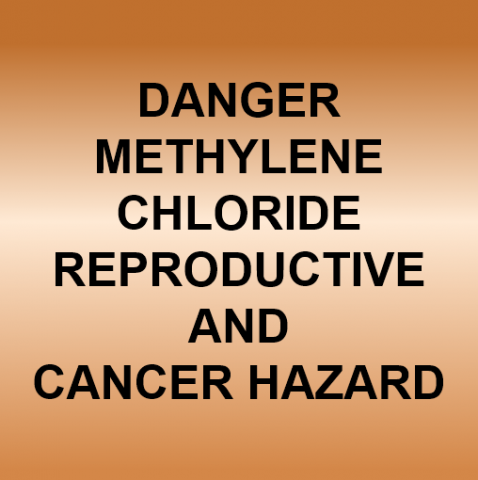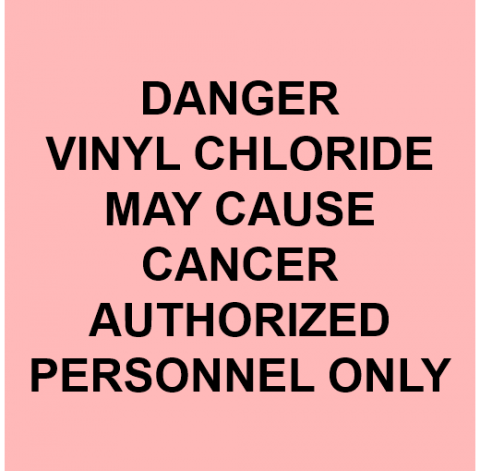The Laboratory Safety Committee has approved policy pertaining to working alone. Review the following documents:
Lab coats should extend to knees. They are available through the University Bookstore, Fisher Scientific, or Grainger.
The CWRU Laboratory Biosafety Manual and Laboratory Safety Manual cannot possibly take into account all procedures that are conducted in laboratories campus wide. For this reason each must keep a Chemical Hygiene Plan in the laboratory.
To determine needed labels and warnings, the Principal Investigator (PI) conducts a risk assessment and identifies hazards associated with the procedures or processes in the work environment. When completed, appropriate warnings must be posted. Labels must be placed from left to right, in order of importance, on the caution sign.
To help laboratories determine required labels, a four-tiered system is used.
Tier 1
If these hazards are present in a work place, a warning label MUST be posted. CWRU caution signs only allow for three hazards to be posted. If more than three of these types of hazards are present in the laboratory, more caution signs will be needed.
- Radioactive-posted outside laboratories where radioactive materials are used or stored or where radioactive wastes are accumulated
- Biohazard–posted outside laboratories or storage rooms where viral, bacterial, rickettsial, fungal, and parasitic agents requiring containment at Biosafety Level 2 or greater are used or stored
- Cancer Hazard–posted outside laboratories or storage rooms where chemicals classified as suspect human or known human carcinogens. If a laboratory uses one of the OSHA-Regulated Chemicals, chemical-specific signage is also required.
- Green Formaldehyde label
- Blue Benzene Label
- Gold Methylene Chloride
- Pink Vinyl Chloride
- Respirator Required – work environments that require the use of a respirator.
- Ultraviolet Light – areas where a UV light source is present.
- Laser Light – identify work environments that use lasers.
- Domestic refrigerators, microwaves, and cold rooms–to prevent the misuse of laboratory equipment and avoid possible exposure to chemicals, biological, and radiologicals: food and drink are prohibited from laboratory refrigerators, microwaves and all cold rooms. EHS requires that each of these items located in a laboratory or designated for laboratory use, have a “No Food or Drink” label posted in a visible location.
Tier 2
After all required Tier 1 warnings have been posted, the following labels should be examined next. If more than one of these hazards present it is the responsibility of the PI, through a proper risk assessment, to determine what hazard should take precedence over the other.
- Flammable Solvents – areas where flammable solvents are used
- Flammable Gas
- Corrosive Materials – areas where acids and/or bases are present
- Toxic Chemicals – laboratories with toxic chemicals
- Toxic Gas – areas that use toxic gas
- Chemical Storage Area – chemical stockrooms or storage rooms used by multiple users or high-volume users for chemicals storage
- Non-Flammable Gas
- Chemical Storage
- Laboratory Animals
Tier 3
After exhausting both Tier 1 and Tier 2, these labels can then be utilized at the PI’s discretion.
- Keep Out – identifying restricted areas to non-laboratory personnel
- Wear Hearing Protection – Noise levels in a particular area reach high levels
- No Food or Drink
- Wear Protective Clothing
- Wear Eye Protection
- Wear Face Protection
Tier 4
These hazard warnings must be posted. EHS should be consulted.
- Electric Shock Hazard
- Thermal Hazard



![Danger Formaldehyde-contaminated [clothing] equipment may cause cancer causes skin, eye and respiratory irritation do not breathe vapor do not get on skin](/ehs/sites/default/files/styles/large/public/2018-02/Formaldehyde-Label-2016.png?itok=jQWhngCu)

